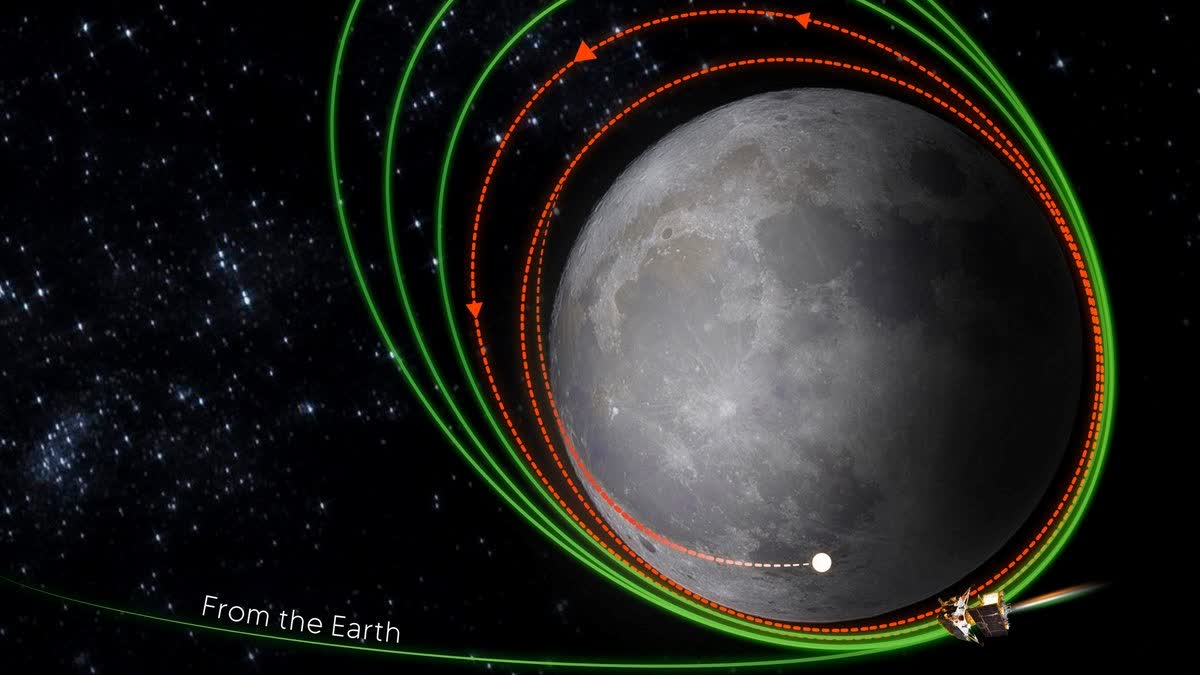Hyderabad: Chandrayaan-3 spacecraft undergoes another maneuver, achieves near-circular orbit around moon, the Indian Space Research Organisation (ISRO) said, in a statement.
ISRO, in a tweet, said: "Orbit circularisation phase commences Precise maneuvre performed today has achieved a near-circular orbit of 150 km x 177 km The next operation is planned for August 16, 2023, around 0830 Hrs. IST"
After the proposed maneuver on Aug. 16 to reach 100 km orbit, the landing module, comprising the lander and rover will break away from the propulsion module.
After this, the lander is expected to undergo a "deboost" (the process of slowing down) and make a soft landing on the south polar region of the Moon on August 23.
Over six moves in the four weeks since the July 14 launch, ISRO had lifted the Chandrayaan-3 spacecraft into orbits farther and farther away from the Earth.
-
Chandrayaan-3 Mission:
— ISRO (@isro) August 14, 2023 " class="align-text-top noRightClick twitterSection" data="
Orbit circularisation phase commences
Precise maneuvre performed today has achieved a near-circular orbit of 150 km x 177 km
The next operation is planned for August 16, 2023, around 0830 Hrs. IST pic.twitter.com/LlU6oCcOOb
">Chandrayaan-3 Mission:
— ISRO (@isro) August 14, 2023
Orbit circularisation phase commences
Precise maneuvre performed today has achieved a near-circular orbit of 150 km x 177 km
The next operation is planned for August 16, 2023, around 0830 Hrs. IST pic.twitter.com/LlU6oCcOObChandrayaan-3 Mission:
— ISRO (@isro) August 14, 2023
Orbit circularisation phase commences
Precise maneuvre performed today has achieved a near-circular orbit of 150 km x 177 km
The next operation is planned for August 16, 2023, around 0830 Hrs. IST pic.twitter.com/LlU6oCcOOb
Then, on August 1 in a key maneuver -- a slingshot move -- the spacecraft was sent successfully towards the Moon from Earth's orbit. Following this trans-lunar injection, the Chandrayaan-3 spacecraft escaped from orbiting the Earth and began following a path that would take it to the vicinity of the moon.
Chandrayaan-3 is a follow-on mission to Chandrayaan-2 to demonstrate end-to-end capability in safe landing and roving on the lunar surface. It consists of lander and rover configuration.
It comprises an indigenous propulsion module, lander module, and a rover with an objective of developing and demonstrating new technologies required for inter-planetary missions.
The propulsion module will carry the lander and rover configuration till 100 km lunar orbit. The propulsion module has Spectro-polarimetry of Habitable Planet Earth (SHAPE) payload to study the spectral and polarimetric measurements of earth from the lunar orbit.
The mission objectives of Chandrayaan-3 are to demonstrate safe and soft landing on the lunar surface, to demonstrate rover roving on the Moon, and to conduct in-situ scientific experiments.
The lander will have the capability to soft land at a specified lunar site and deploy the rover that will carry out in-situ chemical analysis of the Moon's surface during the course of its mobility.
The lander and the rover have scientific payloads to carry out experiments on the lunar surface.
Also read- Rocket with lunar landing craft blasts off on Russia's first moon mission in nearly 50 years
ISRO will be racing with Russian space agency Roscosmos which has launched its Moon mission Luna-25, the country's first lunar lander in 47 years, on Aug. 11, 2023 (local timings). Russian mission coincides with India's third lunar spacecraft Chandrayaan-3 as both landers target to land on Moon's surface on August 23.
India and Russia are both aiming to be the first ever country to land on the Moon's south pole. The Russian spacecraft launched early on Friday morning (IST) will take about 5.5 days to travel to the Moon's vicinity. Luna-25 is reportedly expected to first enter an orbit around the Earth before transferring to a lunar orbit and finally descending on the surface of the Moon.
Only three countries have managed successful landings on the Moon: the former Soviet Union, the United States and China. (with PTI inputs)



